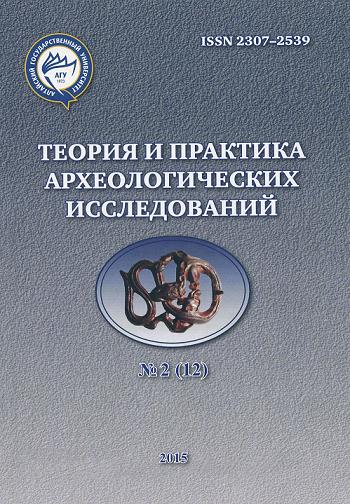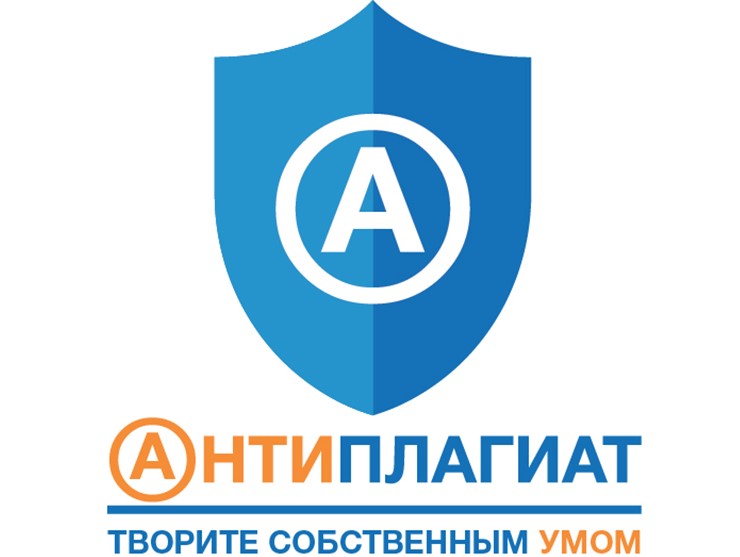3D-MODELLING OF THE BURIAL MOUND WITH A STONE BOX OF THE EARLY IRON AGE IN THE ALTAI MOUNTAINS
Abstract
In the 2nd half of the II millennium BC burials in stone boxes are the most typical for the Kara-Koba archeological culture which was spread throughout the Altai Mountains. This group of the population lived in the period of the Pazyryk archeological culture (V-II centuries BC), which had its own specific features of the spiritual culture reflected in the funeral ceremony. There is a view that the presence of the Kara-Koba type of burials is the result of the conservation of local indigenous groups (descendants of the kuyums) subject to the influence of the foreign population. Later in the Hun-Sarmatian period (the end of I millennium BC - Early I millennium BC) burials in stone boxes are a typical feature of the Bulan-Koba archaeological culture. Overall, therefore, the territory of the Altai Mountains as a part of Central Asia is characterized by the existence of discrete traditions of stone boxes burials prevailing during the sufficiently long period of the Paleometal Age. The lower Katun mountain valley is one of the northern frontiers of the stone boxes burials tradition. As part of the necropolis of the Early Iron Age, Chultukov Log-1 revealed several dozen of undisturbed burials in stone boxes. According to their design features, a stone box is a complex architectural design that cannon be fully be recorded and reflected by the traditional modern archeology means - graphic drawings and photographs. Given this limitation of the traditional means of documentation of archaeological excavations, the most promising is a multimedia visualization (rendering). Rendering of the ancient stone boxes has not only of a source, but also of a museum value for an adequate visualization of archaeological sites as a part of historical and cultural heritage.
Downloads
Metrics
References
Бородовский А.П., Бородовская Е.Л. Археологические памятники горной долины Нижней Катуни в эпоху палеометалла. Новосибирск: Изд-во Ин-та археологии и этнографии СО РАН, 2013. 219 с.
Гук Д.Ю. Исторические реконструкции: от идеи к виртуальному воплощению//Труды IV (XX) Всероссийского археологического съезда в Казани. Казань: Отечество, 2014. Т IV С. 294-296.
Виртуальная археология (неразрушающие методы, моделирование, реконструкции). СПб.: Изд-во Гос. Эрмитажа, 2013. 340 с.
Вавулин М.В., Пушкарев А.А. Трехмерные модели археологических артефактов: возможности современной техники и потребности археологии//Труды IV (XX) Всероссийского археологического съезда в Казани. Казань: Отечество, 2014. С. 287-289.
Зайцева О.В. 3D-фиксация и визуализация результатов археологических раскопок: сравнение методик трехмерного сканирования и неземной фотограмметрии//Труды IV (XX) Всероссийского археологического съезда в Казани. Казань: Отечество, 2014. Т IV С. 300-302.
Леонов А.М. Четыре аспекта виртуальности: документирование, визуализация, образование, шоу//XVIII годичная научная конференция, посвященная 80-летию ИИЭТ им. С.И. Вавилова РАН. М.: Янус-К, 2012. Т II. С. 852-855.
Леонов А.М., Батурин Ю.М. 3D-документ -новый тип научно-технической документации//Вестник архивиста. 2013. №2. С. 192-205.
Пушкарев А.А., Вавулин М.В. Возможности трехмерного отображения археологических артефактов в научной и музейной презентации//Археология Севера России: от эпохи железа до Российской империи. Екатеринбург; Сургут: Магеллан, 2013. С. 288-291.
Gusach I. The Creation of a 3D Model of the Turkish Fortress Azak for Exhibition of the Azov Museum-reserve//3rd International Conference «Ohrid -Vodici, 2015». P. 46.
Bruno F., Bruno S., De Sensi G., Luchi M., Mancusos S., Muzzupappa P. Form 3D reconstruction to virtual reality: A complete methodology for digital archaeological exhibition//J. Cultural Heritage. 2010. V 11. P. 42-49.
Ostrowski W., Bakula K., Zapata R. New look at historic fortifications -medieval castles and laser scanning//International multidisciplinary scientific conferences on social science & arts 3-9 Septembers 2014, Bulgaria. SGEM conference on anthropology, archaeology, history, philosophy. Albena Bulgaria, 2014. Р 307-314.
Theory and Practice of Archaeological Research is a golden publisher, as we allow self-archiving, but most importantly we are fully transparent about your rights.
Authors may present and discuss their findings ahead of publication: at biological or scientific conferences, on preprint servers, in public databases, and in blogs, wikis, tweets, and other informal communication channels.
Theory and Practice of Archaeological Research allows authors to deposit manuscripts (currently under review or those for intended submission to ABS) in non-commercial, pre-print servers such as ArXiv.
Authors who publish with this journal agree to the following terms:
- Authors retain copyright and grant the journal right of first publication with the work simultaneously licensed under a Creative Commons Attribution License (CC BY 4.0) that allows others to share the work with an acknowledgement of the work's authorship and initial publication in this journal.
- Authors are able to enter into separate, additional contractual arrangements for the non-exclusive distribution of the journal's published version of the work (e.g., post it to an institutional repository or publish it in a book), with an acknowledgement of its initial publication in this journal.
- Authors are permitted and encouraged to post their work online (e.g., in institutional repositories or on their website) prior to and during the submission process, as it can lead to productive exchanges, as well as earlier and greater citation of published work (See The Effect of Open Access).








2.jpg)




